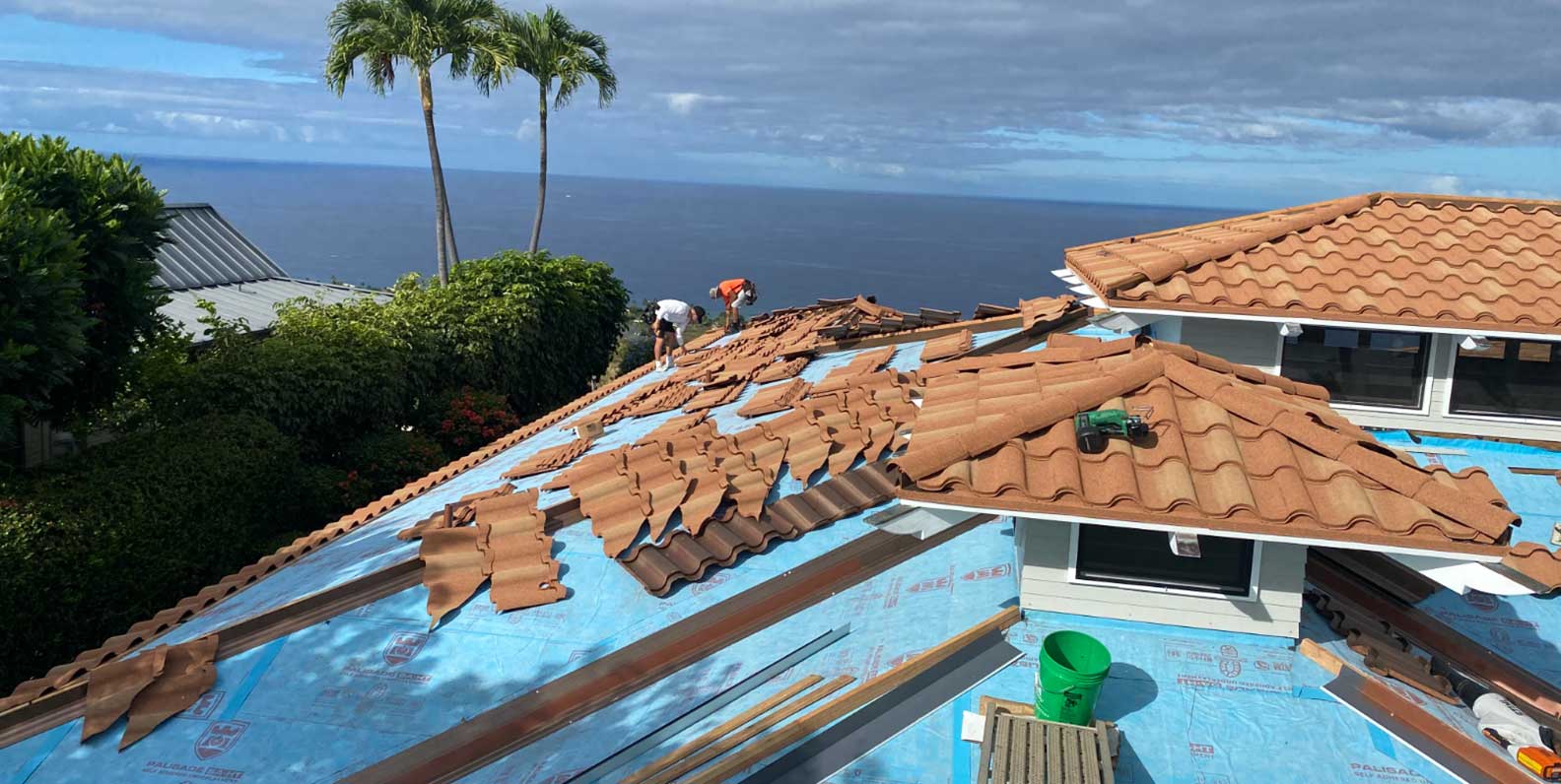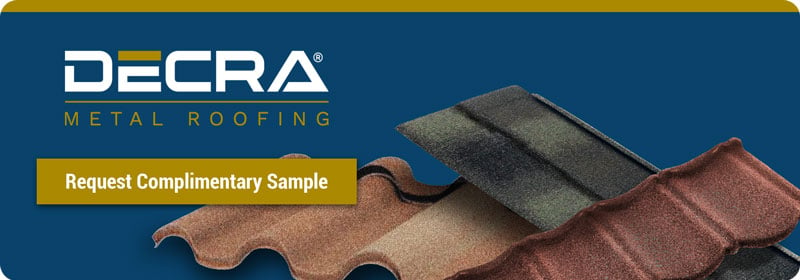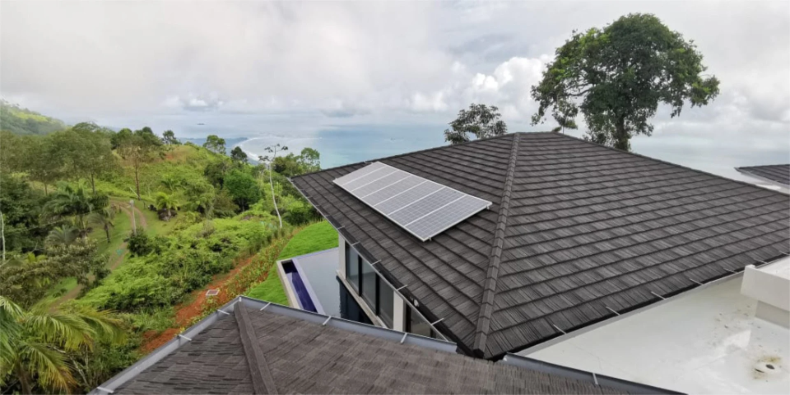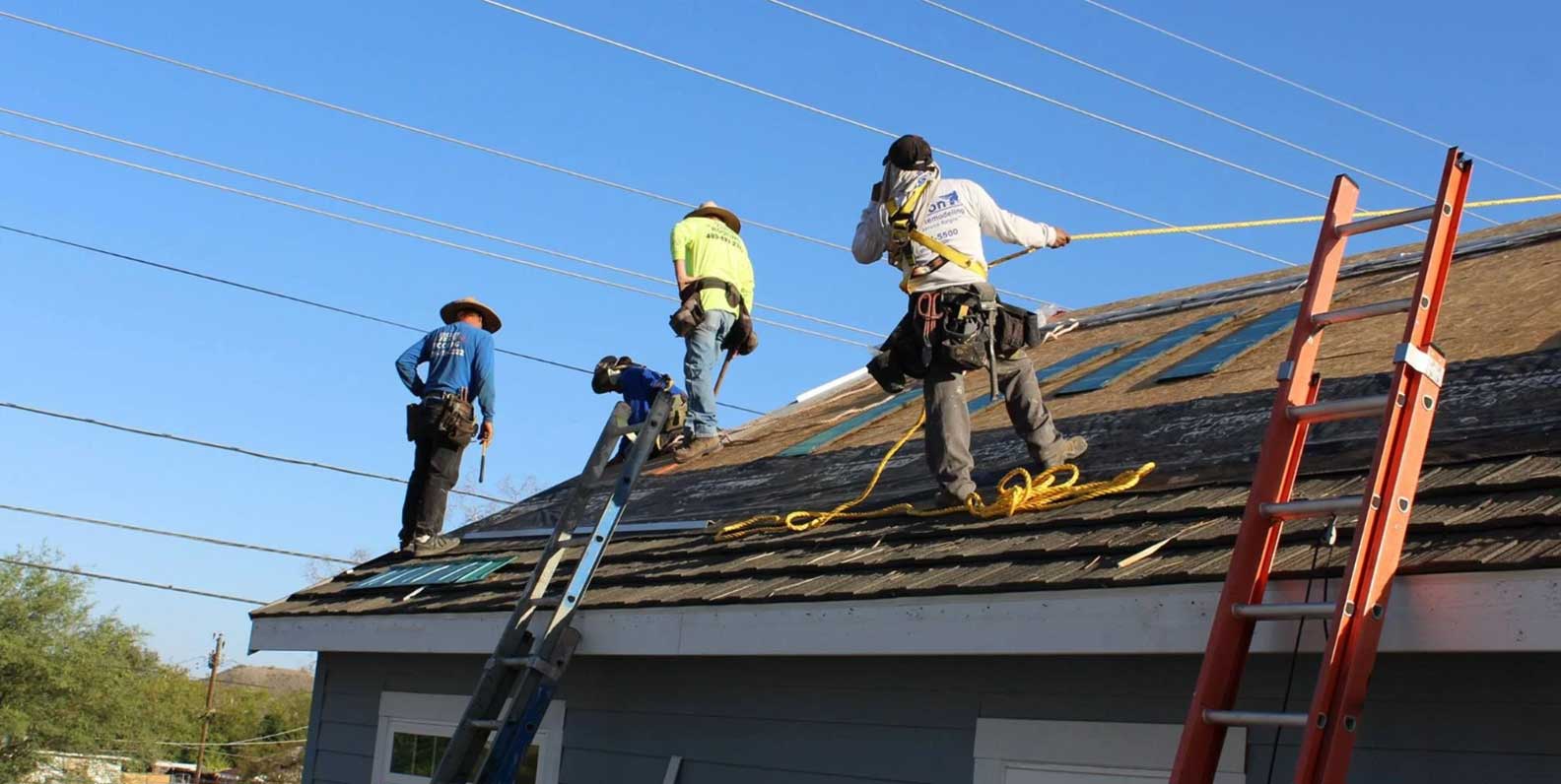A roof remodel is one of the largest renovation projects a homeowner can take on. For first-time homeowners or those unfamiliar with renovations, the process can feel daunting, stressful, and full of unexpected expenses… but it doesn’t have to be.
In this blog, we’ll outline three things you need to know (and do) before a roof remodel:
- Get a roof inspection to uncover and address any structural issues below the surface.
- Choose a roofing material that can withstand your local weather and boost curb appeal.
- Hire a qualified roofing contractor, because even the best materials can fail if they’re not properly installed.
Use these three points as a checklist for your own roof remodel. That way, you'll feel confident knowing you’ve taken the right steps before the work begins.
1. Get a Roof Inspection
Before you can choose materials or hire a contractor, you need to know what you’re working with. That starts with a professional roof inspection. A thorough inspection ensures your roof can support a remodel and uncovers any issues that should be addressed before new materials are added.
A remodel is more than just a cosmetic upgrade. It’s your chance to fix underlying problems like structural damage, rot, or poor insulation. Addressing these now helps you avoid surprises during installation and ensures your investment will last.
Here’s what a professional roof inspection can reveal:
- Structural Integrity: Are there signs of rot, sagging, or damage to the roof decking? Structural issues must be repaired before any new material is applied.
- Roof Layering: Can you add a new layer over the existing material (a roof-over), or will a full tear-off be required? This depends on the number of existing layers and your roof’s ability to support the added weight.
- Water Damage: Are there signs of past or potential leaks, especially around chimneys, skylights, or flashing? Water stains inside the home may also be a red flag.
- Insulation Efficiency: Poor insulation can cause energy loss, ice damming, and higher utility bills. A remodel is the perfect time to upgrade.
- Gutters, Soffits, and Fascia: Are your drainage components in good shape, or will they need replacing? These details matter in protecting your home from water damage.
- Roof Design Challenges: Does your roof have a steep pitch, multiple dormers, or historical architectural elements that complicate installation?
Be sure to share any known issues with your inspector, and take photos of trouble spots if possible.
Here are 10 questions to ask during your roof inspection:
- What is the condition of my current roof?
- Are there any signs of rot or structural damage?
- How should these issues be addressed before installation?
- Is the existing insulation adequate?
- What types of insulation do you recommend for my home?
- Will my current gutters and downspouts work with a new roof?
- Are there signs of past or future water damage risk?
- Do the soffits and fascia need repaired or replaced?
- Are there challenges with my roof design I should be aware of?
- What additional information should I share with my roofing contractor?
2. Choose a Roofing Material
Once you’ve completed a thorough roof inspection and addressed any structural or insulation issues, the next step is choosing a roofing material for your home. This decision goes far beyond aesthetics. Your choice will impact your home’s durability, energy efficiency, resale value, and overall cost of ownership.
The “best” roofing material isn’t one-size-fits-all. It depends on several key factors, including:
- Your short-term budget vs. long-term investment goals
- Local climate conditions and weather-related risks
- HOA or historic district requirements
- Desired curb appeal and architectural style
It’s also important to understand that the true cost of a roof includes more than just installation. Consider maintenance, lifespan, repair frequency, and return on investment (ROI). A cheaper material might save money upfront, but may require more frequent repairs or earlier replacement, ultimately costing you more in the long run.
Below, we break down four popular roofing options, including the pros and cons of each:
Asphalt Shingles
Asphalt shingles are the most commonly used roofing material in the U.S. due to their affordability and wide availability. They’re ideal for budget-conscious homeowners or quick replacements.
Pros:
- Lower upfront cost
- Easy to install
- Readily available
Cons:
- Short lifespan (12 to 20 years depending on quality and climate)
- Prone to cracking, warping, and granule loss over time
- Petroleum-based and non-recyclable, contributing to landfill waste
- Limited to warm-weather installation, which may delay cold-season projects
Wood Shakes
Wood shakes offer a timeless, rustic aesthetic favored in regions like the Northeast and Pacific Northwest. They complement historic homes and natural settings but require significant upkeep.
Pros:
- Distinctive, weathered appearance
- Ideal for historic or colonial-style homes
Cons:
- High maintenance (requires regular cleaning and treatments)
- Not suitable for wildfire-prone areas
- Can crack from hail, debris, or temperature swings
- Shorter lifespan compared to more durable materials
Clay Tiles
Often seen in the Southwest and Florida, clay tiles complement Spanish and Mediterranean architecture. While visually striking, they come with structural demands and maintenance challenges.
Pros:
- Attractive and authentic look
- Fire-resistant and long-lasting in dry climates
Cons:
- Fragile: Tiles can break from impact or foot traffic
- Heavy: Some require structural reinforcement
- High cost and frequent tile replacements can add up
Metal Roofing
Metal roofing is a high-performance, long-lasting option that’s growing in popularity due to its durability, energy efficiency, and longevity.
Pros:
- Lifespan of 40 to 80 years
- Reflects sunlight to reduce cooling costs by up to 25%
- Qualifies for insurance discounts due to superior durability
- Often made from recycled materials and fully recyclable at end of life
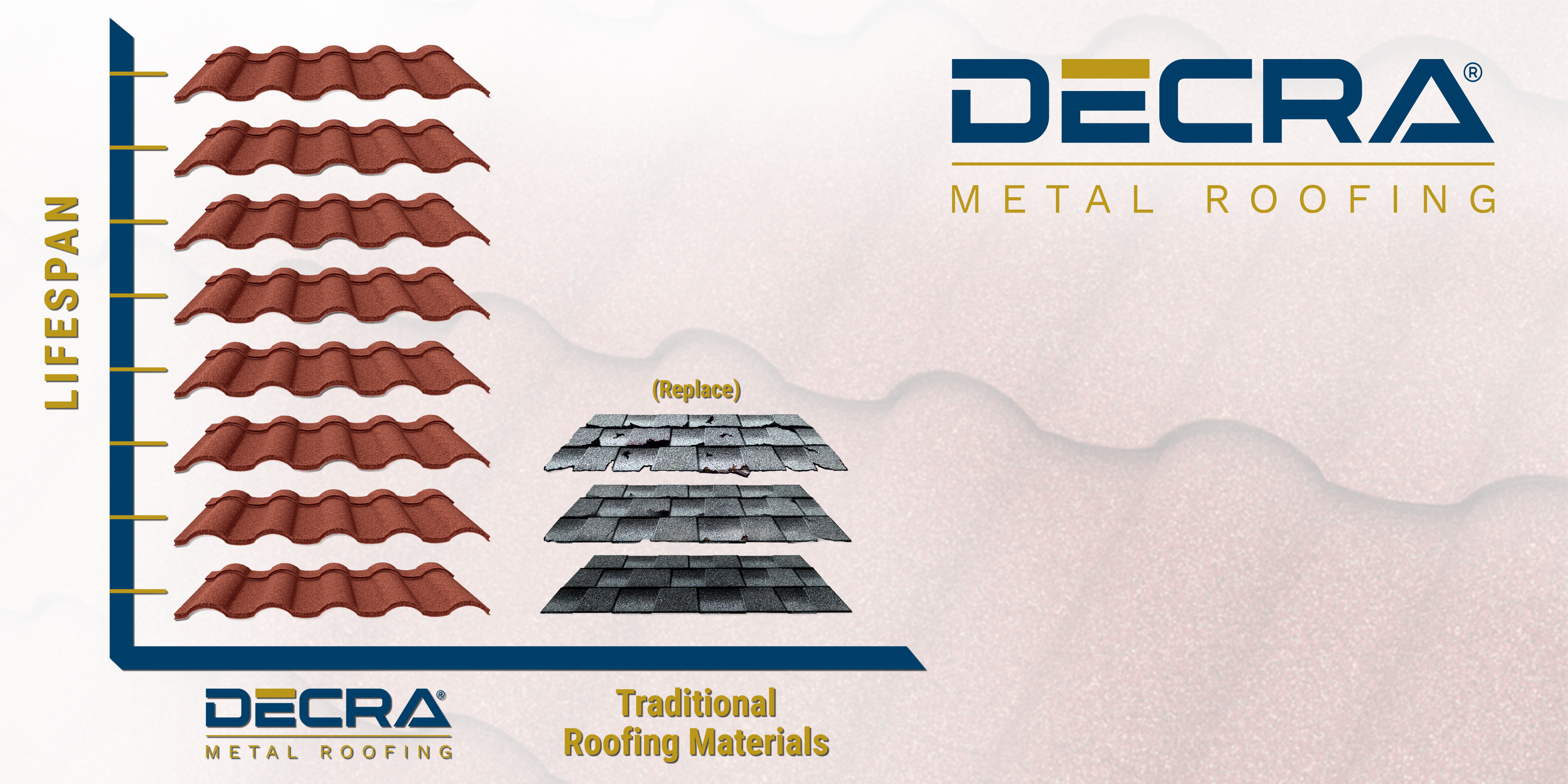
Stone-Coated Metal Roofing
Stone-coated metal options like DECRA combine durability and beauty. They mimic the look of asphalt shingles, clay tiles, or wood shakes while outperforming them in nearly every category.
Benefits include:
- Class A Fire Resistance Rating (the highest possible)
- Class 4 Impact Rating for Hail (the highest possible)
- Warrantied for winds up to 120 miles per hour and hailstones up to 2.5 inches in diameter
- Approved for use in High-Velocity Hurricane Zones, including Miami-Dade Florida
- Lightweight and (sometimes) suitable for installation over asphalt shingles
- Rust- and corrosion-resistant, especially in humid or coastal climates
- Non-porous and resistant to freeze-thaw cycles that can cause ice dams
Plus, DECRA is HOA-friendly thanks to its diverse range of colors and profiles designed to blend with any architectural aesthetic.
While modern metal roofing typically comes with a higher upfront cost, it quickly pays off through long-term financial benefits, including:
- Increased Property Value: A metal roof can increase your home’s resale value by up to 6%, and homeowners can recoup an average of 85.9% of your costs on a metal roof.
- Energy Efficiency: In hot climates, metal roofing reflects solar heat, which can lower cooling costs by up to 25%. Plus, metal roofs are compatible with solar panels.
- Insurance Savings: Because metal roofs are more resistant to damage, they’re often eligible for insurance discounts.
- Exceptional Longevity: With a lifespan that is two to three times longer than traditional materials, metal roofs significantly reduce the frequency of repairs and replacements.
3. Hire a Qualified Roofing Contractor
No matter which roofing material you choose, proper installation is key to maximizing its performance. That’s why it’s essential to hire a qualified roofing contractor with the right experience and credentials.
Look for a contractor who has direct experience installing the specific material you’ve selected and who understands the unique challenges your roof may present. Ask to see a portfolio of past projects, specifically ones involving homes similar in size, style, or roof pitch to yours.
A reputable roofing contractor should be:
- Licensed, in accordance with local or state regulations
- Insured, to protect against accidents or damage during the job
- Well-reviewed, with references from previous clients and ratings on sites like Google and Yelp
Before any work begins, be sure to request a written estimate and review it carefully. You’ll also want to clarify and agree upon:
- Total project cost, including contingencies for unforeseen issues
- Payment terms, such as deposit amounts and timing of installments
- Available financing options, discounts, or incentives
- Responsibility for cleanup and disposal of old materials
Once everything is agreed upon, ensure all terms are clearly outlined in a signed contract to protect both parties.
Interested in DECRA for Your Roof Remodel?
Whether you’re drawn to the look of asphalt shingles, classic clay tiles, or rustic wood shakes, DECRA’s line of stone-coated metal roofing products provide the style and strength you need.
As the original manufacturer of stone-coated metal roofing products, DECRA Metal Roofing has set the industry standard for durability since 1957. Manufactured at our state-of-the-art facility in California, our stone-coated metal roofing products have stood the test of time, even in some of the harshest climates.
To see and feel the DECRA difference for yourself, request a complimentary sample today. Once you’re ready to move forward, just click the “Find Contractor” button in the top right corner of our website, and we’ll connect you with a reputable contractor to get your remodel underway.
Editor’s Note: This blog was originally published in August 2023, but has been updated with relevant information.

